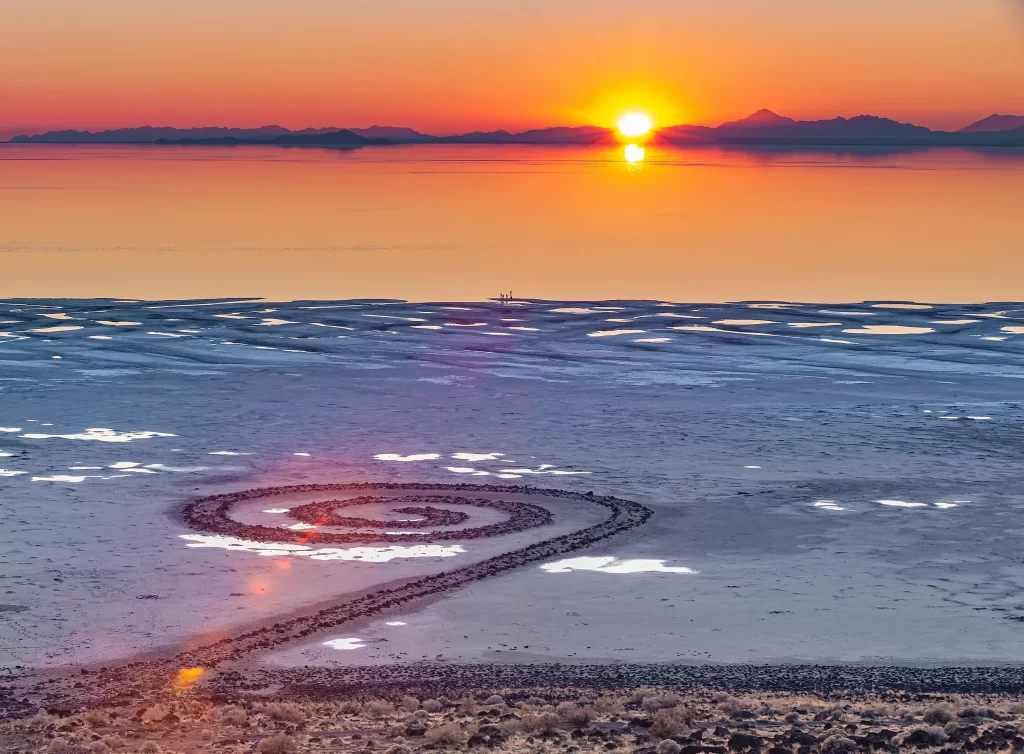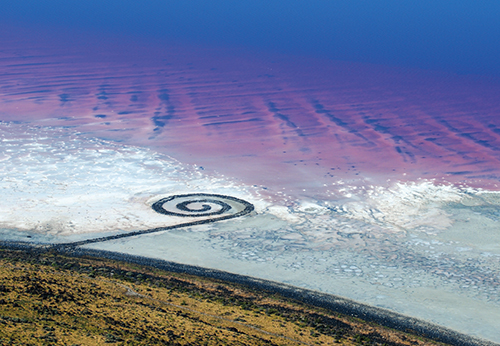

Robert Smithson’s Spiral Jetty, located on the Great Salt Lake in Utah and completed in 1970, is a unique and remarkable piece of land art. The massive, coil-shaped jetty extending into the lake’s waters, is constructed using black basalt rocks, earth, and salt crystals. This artwork points to the interplay between human intervention and the forces of nature. The interaction with natural processes is the foundation of Smithson’s artwork. The changing tides and colors of the lake throughout the year transform the entire viewing experience of the Spiral Jetty. As the water level rises, the Jetty becomes covered with salt crystals, created by the lake’s high levels of salt concentration. When the water level recedes, a beautiful view of the salt-crystallized Spiral Jetty emerges. This relationship showcases the impact of natural changes on the artwork, as it undergoes transformations throughout the year, the artwork is subjected to the will of mother nature evolving over the years and seasons. The materials used, the location, and the purpose behind creating the Spiral Jetty add to its significance. Smithson deliberately chose materials sourced from the land, such as basalt rocks, which create a connection between the earth and the sea. The spiral shape of the jetty resembles the form of a shell, symbolizing the connection between land and sea. This artwork showcases the duality of the human touch and the inherent beauty of nature, showing us the potential of their partnership. Smithson’s Spiral Jetty highlights the impact of both human creativity and the natural processes shaping our environment.
